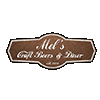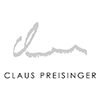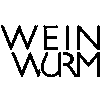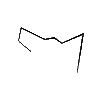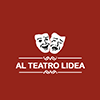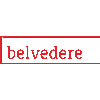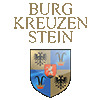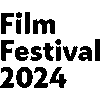Sun, July 21 - Departure
BOS → VIE
- 7 hours, 26 minutes
- Boeing 767-300
- 4,040 mi
Austrian Air has a new direct flight from Boston to Vienna. The seats were fine, a bit narrow across the shoulders when reclined. The flight was early, 17:00, which made any amount of sleeping difficult. The food and service were quite good.
Mon, July 22 - Arrival
We landed an hour early, too early for Bruno-cab to be in operation, so we took an Uber to our hotel. Hoxton recently opened this new location in Vienna, and Jen was able to get an opening price deal for the week. On arrival, ~7:30, there was no room yet available. We relaxed in the lobby with a coffee.
As soon as Bruno-cab departed to rescue us: a room became available. This gave us the opportunity to shower and change clothes before Bruno whisked us away to eat breakfast at the Palmenhaus. Sitting outside in the sun and fresh air, with even more coffee, helped fight off jet lag.
After breakfast we picked up Wolfie, and headed out to Kreuzenstein Castle.
Kreuzenstein castle is a castle near Leobendorf in Lower Austria, Austria. Burg Kreuzenstein is 265 metres (869 ft) above sea level. It was constructed on the remains of a medieval castle that had fallen into disrepair and was then demolished during the Thirty Years' War. Intended to be a family vault for the Wilczek family, it was rebuilt in the 19th century by Count Nepomuk Wilczek with money from the family's large Silesian coal mines. Kreuzenstein is interesting in that it was constructed out of sections of medieval structures purchased by the family from all over Europe to form an authentic-looking castle. Thus, the castle can be considered both a 'neo-' and 'original' medieval structure. more…
We returned to Vienna via Bruno-cab, and went to the Rathausplatz where the summer film festival was setup. The last time we visited Vienna we went here as well. The "city hall plaza" is configured with large tents and seasonally permanent food and beverage stands. There's also a series of films that are shown to the public, and a bunch of seating in support of that.
Although I took a power nap on the way up and back to the castle, we were still dragging. Bruno-cab returned us to the hotel, where we took a longer nap.
Post-nap, we hit a couple grocery stores for snacks and provisions for the week.
Tue, July 23 - Wine Day
Actually Bruno's birthday
It should be noted that as you read ahead, imagine that Bruno is accepting non-stop birthday wishes (via phone, text, WhatsApp, etc) the entire day. A small preview into how much love in the world is out there for our humble guide.
Weingut Claus Preisinger
When Bruno and Wolfie visited the states and stayed with us in Boston, they brought us several bottles of orange/skin-contact/natural wines. When Bruno asked us which wineries we wanted to visit when we were in Vienna: Jen replied "the natural ones."
We were told by our guide that the first tasting was scheduled for 10 and our pickup was to be promptly at 9. After years of experience with Bruno, we know that prompt is not really in his repertoire. True to form, "birthday complications" arose and he arrived promptly at 9:15. Well within the margin of error.
We first drove out to Gols and Weingut Claus Preisinger. We had an amazing 2 hour tour and tasting with Catherina. We covered many topics. Including the state of governmental intervention in wine growing (stupid), learned about Claus via many amusing stories (on the tour we walked past a closet with a sign that read "This room is organized. Do not touch. This means you Claus!").
One thing we learned, which was new to us, was that as a result of how generational rights to farming work in Austria: some of their "fields" are only one or two rows of grapes. My rough understanding is that as farms were divided up to the children of the farmers, each would inherit sections of the fields that were closest to their house. As generations passed, and more and more dividing occurred: the sections became smaller and smaller. Catherina noted that while this made working the grapes less convenient, workers and equipment must be moved from place to place, it did provide a certain amount of redundancy and protection. A hail storm at one side of the lake might damage some rows of their grapes, but it wouldn't be able to wipe out an entire crop.
Weingut Weinwurm
Bruno had not expected to spend so long at our first stop, so the plans for a leisurely lunch on the banks of the river were scrapped in favor of a sandwich from a grocery store, we stopped at on the way to Dobermannsdorf, which we ate in the car.
Dobermannsdorf is much further north. We drove alongside the Slovakian border most of the way up. A joke was made that hopefully we had brought our passports in case the GPs routed us into Slovakia on the way. Luckily we didn't find out what happens when you cross a border without one's passport.
Georg Weinwurm met us when we arrived. While Claus Preisinger was a new winery for us, we had consumed a few bottles of Weinwurm at home and have a strong fondness for their Roter Muskateller, specifically the skin fermented variety.
Georg inherited his farm when his father retired. Previously the farm had cattle and other animals, but now it was exclusively focussed on wine. They had reclaimed the various barn spaces for aging and bottling, and expanded their buildings with modern power and cooling.
Georg explained that the skin fermented wine was somewhat a niche product for him. Our timing was just right and we were able to tase both the 2022 vintage and the new 2023. Over the duration of our 2 hour tour and tasting, we met several members of Georg's family, including two of the farm cats.
I once again napped on the return trip to Vienna. Bruno spent the entire trip on the phone with well wishers. The constant German speaking was a pretty good backdrop for sleeping, although the random American names (Biden! Kamala!) did cause my brain to stir.
Bruno-cab returned us to our hotel. We relaxed for a a few hours, before heading out to meet up with everyone for the birthday dinner.
Restaurant On
We met up with most of the other early guests for family dinner for Bruno's birthday. We were introduced to several of Bruno's college friends, friends from Norway, and several members of Wolfie's family.
Our previous trip to Vienna Bruno had suggested On to us for dinner. Asian food is always a good bet for acquiring vegetarian food for Shannon. Bruno is friends with the owner of On and gave him carte blanche to make whatever dishes he wanted. Everything was served family style, which match the mood of the table, and was very enjoyable.
Wolfie arrived later, after his show was over, with Bruno's gift of a new Vespa. This was quite a hit with the nephews, the younger of which had grand ideas of how fast he could make that Vespa go.
Wed, July 24 - Vienna Wandering
Our Wednesday was unplanned, with the exception of our reservation for dinner. My normal modus operandi is to hit up Atlas Obscura to find a few less traveled places to visit. I had done some pre-reading and selected a few new targets for us to investigate. Always at the top of the list: anything underground or a good crypt.
Habsburg Imperial Crypt
The Imperial Crypt (German: Kaisergruft), also called the Capuchin Crypt (Kapuzinergruft), is a burial chamber beneath the Capuchin Church and monastery in Vienna, Austria. It was founded in 1618 and dedicated in 1632, and located on the Neuer Markt square of the Innere Stadt, near the Hofburg Palace. Since 1633, the Imperial Crypt serves as the principal place of entombment for the members of the House of Habsburg. The bones of 145 Habsburg royalty, plus urns containing the hearts or cremated remains of four others, are here, including 12 emperors and 18 empresses. The visible 107 metal sarcophagi and five heart urns range in style from puritan plain to exuberant rococo. Some of the dozen resident Capuchin friars continue their customary role as the guardians and caretakers of the crypt, along with their other pastoral work in Vienna. The most recent entombment was in 2023. more…
The sarcophagi were impressive. A great number of them were created by the same person or at least the same workshop. Viewed up close, the carvings were extremely intricate. Unfortunately, at the time we were visiting the was a guided tour happening in German. Normally that wouldn't be an issue, however, the tour guide made a big deal about shaming anyone not on the tour into silence if they dared to make any noise. This definitely removed some of the enjoyment as we could only whisper about some of the cooler things that we saw.
Stephansdom Crypt
When the charnel house and eight cemeteries abutting the cathedral's side and back walls closed due to an outbreak of bubonic plague in 1735, the bones within them were moved to the catacombs below the church. Burials directly in the catacombs occurred until 1783 when a new law forbade most burials within the city. The remains of over 11,000 persons are in the catacombs (which may be toured). more…
And tour them we did.
It turned out that we had visited these catacombs when we last in Vienna. They don't allow photos, which can mess up our research for other trips. For some reason I have a memory that the Ducal Crypt had been closed the last time (I have a photo of a photo of the crypt on a wall), but I think photo was to tell us where the "heart room" was located.
Pramerl & the Wolf
You would be forgiven for thinking this had become a food blog. We've been making the choice to have at least one really nice dinner reservation. Not all of them have Michelin Star, but some of them do.
Thu, July 25 - Das Phantom
Ankeruher
The Ankeruhr is a bridge-like connection between the two buildings that make up the Akerhof, spanning the alley below. Located on the bridge is the Ankeruhr, which survived the bombs of World War II.
The Art Nouveau work was created between 1911 and 1914 by Franz von Matsch. The mechanism inside was made by Franz Morawetz, the court clockmaker of the time. The clock is designed as a linear clock, where figures move along a scale covering an hour period of time, to be replaced by the next figure for the next hour. The figures are moved by a chain drive. The hour is marked in Roman numerals above each figure’s head, while the minutes are read along the scale. more…
Ristorante Al Teatro L'idea
Das Phantom
Fri, July 26 - Happy Birthday
Holy Trinity Greek Orthodox Church
Holy Trinity Greek Orthodox Church (Griechenkirche zur Heiligen Dreifaltigkeit) is a Greek Orthodox Church Cathedral in the first district of Vienna, Austria, in the historic Greek neighborhood of Vienna's Innere Stadt. The neighborhood has also been known as the "Fleischmarkt". more…
Church of the Jesuits
The Jesuit Church (German: Jesuitenkirche), also known as the University Church (German: Universitätskirche), is a two-floor, double-tower church in Vienna, Austria. Influenced by early Baroque principles, the church was remodeled by Andrea Pozzo between 1703 and 1705. The Jesuit Church is located on Dr. Ignaz Seipel-Platz, immediately adjacent to the old University of Vienna buildings. more…
Austrian National Library
The Austrian National Library (German: Österreichische Nationalbibliothek) is the largest library in Austria, with more than 12 million items in its various collections. The library is located in the Neue Burg Wing of the Hofburg in center of Vienna. Since 2005, some of the collections have been relocated within the Baroque structure of the Palais Mollard-Clary. Founded by the Habsburgs, the library was originally called the Imperial Court Library (German: Kaiserliche Hofbibliothek); the change to the current name occurred in 1920, following the end of the Habsburg Monarchy and the proclamation of the Austrian Republic. The library complex includes four museums, as well as multiple special collections and archives. more…
The Party
Just a simple yodel that everyone knows
Sat, July 27 - Recovery, Pork Knuckle, and Swings! Oh my!
Brunch
Morning after
Stelze a.k.a. Pork Knuckle
Schweinshaxe (German pronunciation: [ˈʃvaɪns.haksə] ; literally "swine's hock"), in German cuisine, is a roasted ham hock (or pork knuckle). The ham hock is the end of the pig's leg, just above the ankle and below the meaty ham portion. It is especially popular in Bavaria as Schweinshaxn, pronounced [ˈʃvaɪns.haksn̩] or Sauhax(n) [ˈsaohaks(n̩)]. A variation of this dish is known in parts of Germany as Eisbein, in which the ham hock is pickled and usually slightly boiled.
…
The Austrian version of this dish is called Stelze [ˈʃtɛl.tsə] or in dialect Stötzn/Stelzn [ˈʃtœˑ.tsṇ]. It is usually marinated or pre-boiled in a caraway seed and garlic brine, roasted until the skin is crisp, and served with mustard, horseradish, and pickled chili peppers. more…
Sun, July 28 - Recovery Two
Schmetterlinghaus
The Palmenhaus (Palm House), also known as the Glashaus (Glass House), is a building in the Innere Stadt district of Vienna. It is located on the edge of the Burggarten near the Albertina and the State Opera. It is 180 metres long and 13 metres wide, and has a floor area of around 2,050m². more…
Mon, July 29 - Departure
VIE → BOS
- 8 hours, 45 minutes
- Boeing 767-300
- 4,040 mi






















